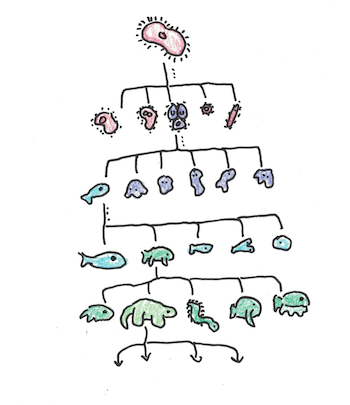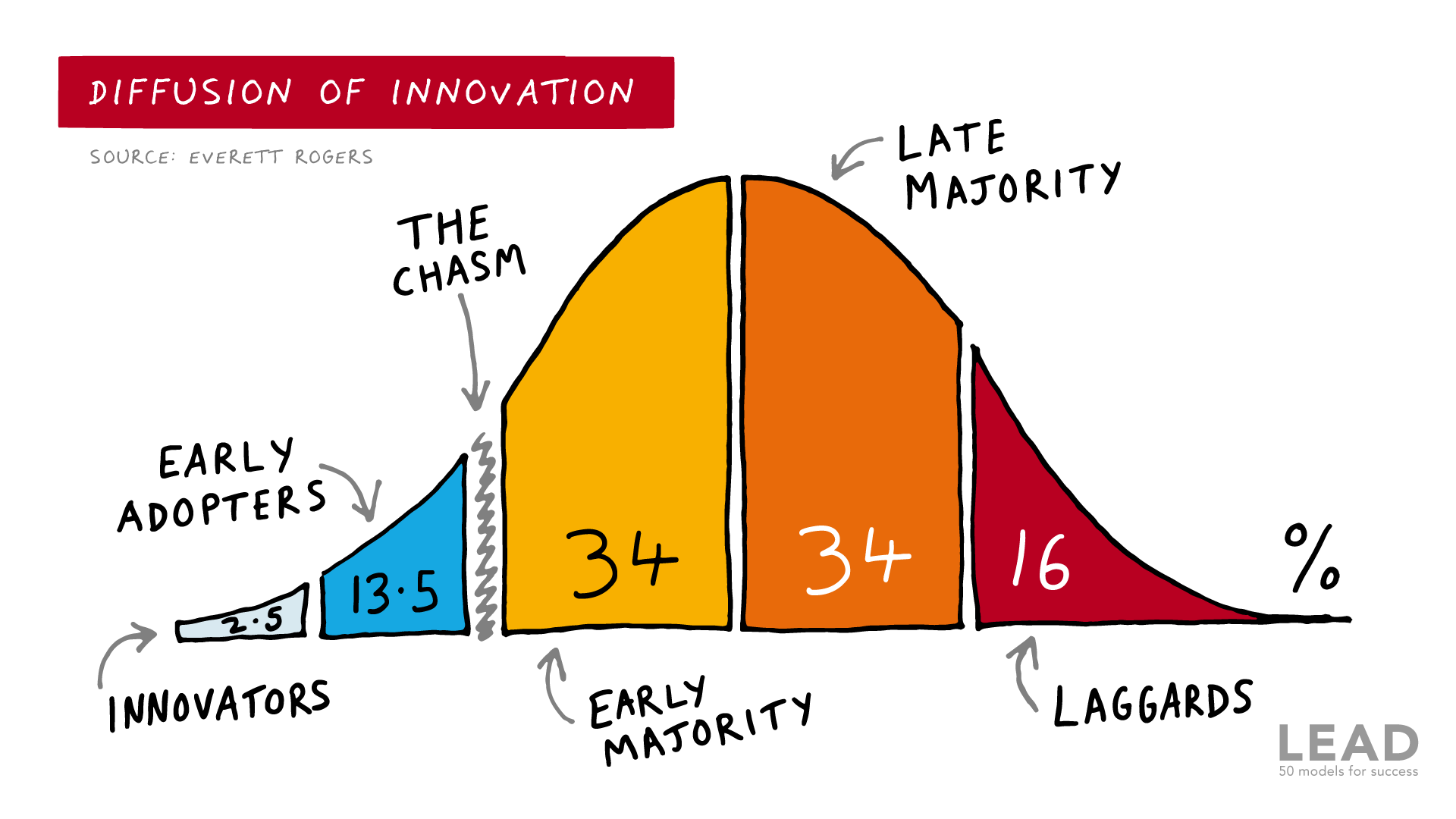According to evolutionary trends, about 4 billion years ago, life began on earth with single cells emerging. 1.2 billion years ago multi-cellular creatures appeared. 600 million years ago organisms with central nervous systems came. About 500 million years ago animals with brains began to emerge, then 300 million years ago, the universe started to host amphibian creatures. 120 million years ago, the first mammals came. 60 million years ago, we see traces of the first primates, from which we are descendants. 4 million years ago Homo erectus, but 200,000 years ago, homo sapiens otherwise called man came.

There are events that change the world modern world. They include the invention of the printing press, the compass, the paper currency, development of steel, the electric light, the domestication of the horse, the transistor, the telegraph, antibiotics, the steam engine, the stone tool, the assassination of Archduke F. Ferdinand and the corresponding Outbreak of World War I in June 28, 1914. This inspired further more the Russian Revolution of 1917, the stock market crash of 1929 and subsequent American Great Depression. After that comeback came the German Invasion of Poland, the Pearl Harbour bombing of 1941 that led to the world war 2, which inspired the Atomic Bombs of Hiroshima. More things that changed the world includes the Indian Independence of 1947, the Establishment of Maoist China, the assassination of John F Kennedy, the Fall of the Berlin Wall. Closer to Africa is the frequent coup and counter coups of the 60s, 70s and 80s in the continent, even Nigeria that created selfish international allies and eventual devaluation of our local currencies, grants and hand downs, decay of the African state and militarization and oppressions that led to protest. Then came the Freedom of Nelson Mandela from jail in South Africa, return of democracy to African nations, which included NIGERIA, that happened in 99. Foreign policy changes as an aftermath of the 9/11 Terrorist attacks. Events, people, places and knowledge has always been known to change the world.
Closer to modern evolutionary socio economic trend, we had the efficiency boom in the 1920s, the postwar gigantism of the 1940s, the rationalization of government and rise of marketing in the 1950s, the age of corporate influence in the 1960s, the restructuring of America and rise of strategy and management in the 1970s, the massive growth of information technology in the 1980s, globalization of the 1990s, and the boom-bust-and-cleanup of the 2000s. In all of these we see a trend. Things change and trends are altered. In general, there are mainly four things that have the capacity to alter destiny in any direction. They are: people, places, events and knowledge. They trigger changes that cause trends. But those trends don’t just happen. It depends on the quality of people that start them and how others adopt them in terms of speed and pattern. For anything to become a new trend, many must adopt it. And in general, there are 5 categories of adopters diffusion from the first to the last. They are the innovators, early adopters, early majority, late majority, and laggards.
Now lets explore their characteristics.
Innovators are a small group who are first to know and try things, then make it popular. They are adventurous. They make up less than 2.5percent of the total population of any system.
The early adopters are opinion leaders. Their endorsement goes a pretty long way. They are the gap between trendsetters and the majority. They make less than 13.5percent of the total population of any system.
Early majority adopts trends as it gains more momentum. They adopt these products only when they think it has real benefits. 2/3rd of every population are either early or late majority. They make less than 34percent of the total population of any system.
Late majority are resistant to change. They make less than 34percent of the total population of any system.
Laggards are the last or never get to adopt the trend. This is because they have very minimal exposure to media so it reduces their ability to be responsive to change.

From the over 175 videos that have 1 billion Youtube views which includes songs like Gangnam style and Baby Shark’s lullaby to over 1 billion bottles of Coca Cola products sold daily; from the millions of people that buy products that creates billions for Dangote, to the billions we’ve spent on buying Gala and Indomie, what sits on top of it all is trend which either started off a fluke or as a result of a great business model and marketing strategy. Sometimes, it’s just plain fluke. A good example on the global scale is the Mannequin Challenge. It went viral a few years ago and cooled off. This is typical of trends.
The Mannequin Challenge was a viral Internet video trend which became popular in November 2016, in which people remain frozen in action like mannequins while a moving camera films them, often with the song “Black Beatles” by Rae Sremmund playing in the background. It inspired the corresponding hashtag
#MannequinChallenge, which was used for popular social media platforms such as Twitter and Instagram. It is believed that students at a high school in Jacksonville in Florida started the phenomenon. Its still to date is a powerful concept where people just stay still, like mannequins and the only thing that moves is the camera in 360 degree. Everyone seemed to have done it in a few days just after the Florida kids had done it, from Hillary Clinton to Nigeria’s Emmanuella to, UBA, to Kelvin Hart and even an entire stadium in a football match. It’s creative and engaging. It was lovely. It was a powerfully deep view and experience, especially with the Black Beetle song featuring Gucci Mane playing in the background. The roots have been traced back to Twitter user @thvtmelanin_, a high school student named Emili from Jacksonville, Florida. “One day I just went to the front of the class and stood there,” Emili told Inverse magazine via Twitter DM. “That’s when my friend A’laynah said, ‘Hey, you look like a mannequin.’ Then my friend Bre’Onna and Jasmine joined and we started doing all these crazy poses.”
People like Emili and E’layanah exists around us. They start trends. They have special features in their behavioral patterns. They are mavens, sneezers, innovators or connectors. MAVENS on the one hand are people who know a lot about a skill, Sneezers house them as platforms while CONNECTORS know and engage them.
Mavens are masters. They are experts and thought leaders in their chosen field and industry, and since there are different industries in the world, they are usually scattered everywhere. But connectors are people who connect everyone to the same page, the same world. They have a special gift of bringing the bests of a particular demography, the world together through the sneezers.
In marketing or any campaign, know the guys with the characteristics of mavens, sneezers, connector and inventors. Together they make up what we call influencers.
These days, it’s not boardroom strategy and marketing budgets, but underrated influencers and people like these that start and end trends, destroying and recreating products that disrupts industry and our world. Its people like these that actually made Trump win an election, like yawning, they possess an unknown spirit and gift to create what is highly contagious and other people just copy. Don’t ignore them, like the guy that that burnt himself and started the Arab spring. Strangely we have them unnoticed (even to themselves) in all industries. We call people like Emili, Bre’Onna, Jasmine and A’layanah connectors, they teamed up with Mavens (other cool college kids) and Sneezers (social media). Every industry has them. Let me break down a key concept through this.
“This Mannequin challenge, a silly class prank then evolved into a full-blown social media challenge reaching billions in days thanks to a little encouragement from a friend”, Emili said. How did it then go viral?
I said to my team at Hexavia last week, “As marketing and management consultants, I need us to research and find the DNA of viral concepts. Like cell study in biotechnology, if you apply nanotechnology into zooming of a cell, you can alter and recreate life. That’s where 3D printing and cloning of human parts and biogenetics is coming from. Same way, anyone who masters DNAs of how these trends go viral can duplicate it and I am sure there are millions we can make from it.
Still unknown to a lot of people, big budget for campaigns and ads are failing and contagiousness is replacing mainstream marketing, how well do you know them?
Who’s noticed that Google ads are now everywhere, they now advertise offline on radio and billboard. With too much ads everywhere plus social media, as the world gets to the breaking point of information overload, the future of business moves away from marketing and goes back to the value of word of mouth and the power of friend of a friend’s friend. This will depend no more on corporate communication but on the value and stickiness of the message, the context of the message and the quality of the channels that carries it – which must satisfy The Law of The Few. This states that for a message to go viral, it must be sticky and initiated by a small select group of people categorized into mavens (experts), sneezers (broadcasters/platforms with large but targeted followers of like minds), connectors (socialites and networkers) or all put together. From these guys it diffuses through different social categories mainly innovators, and then if it is sticky enough, is passed on to the early adopters, then early majority, to the late majority, and then laggards in that order. Build your innovation diffusion’s and marketing strategy through that curve.
Eizu, ©Hexavia!
Strategy. Business StartUps and Corporate Restructuring Consulting
T: 08035202891






